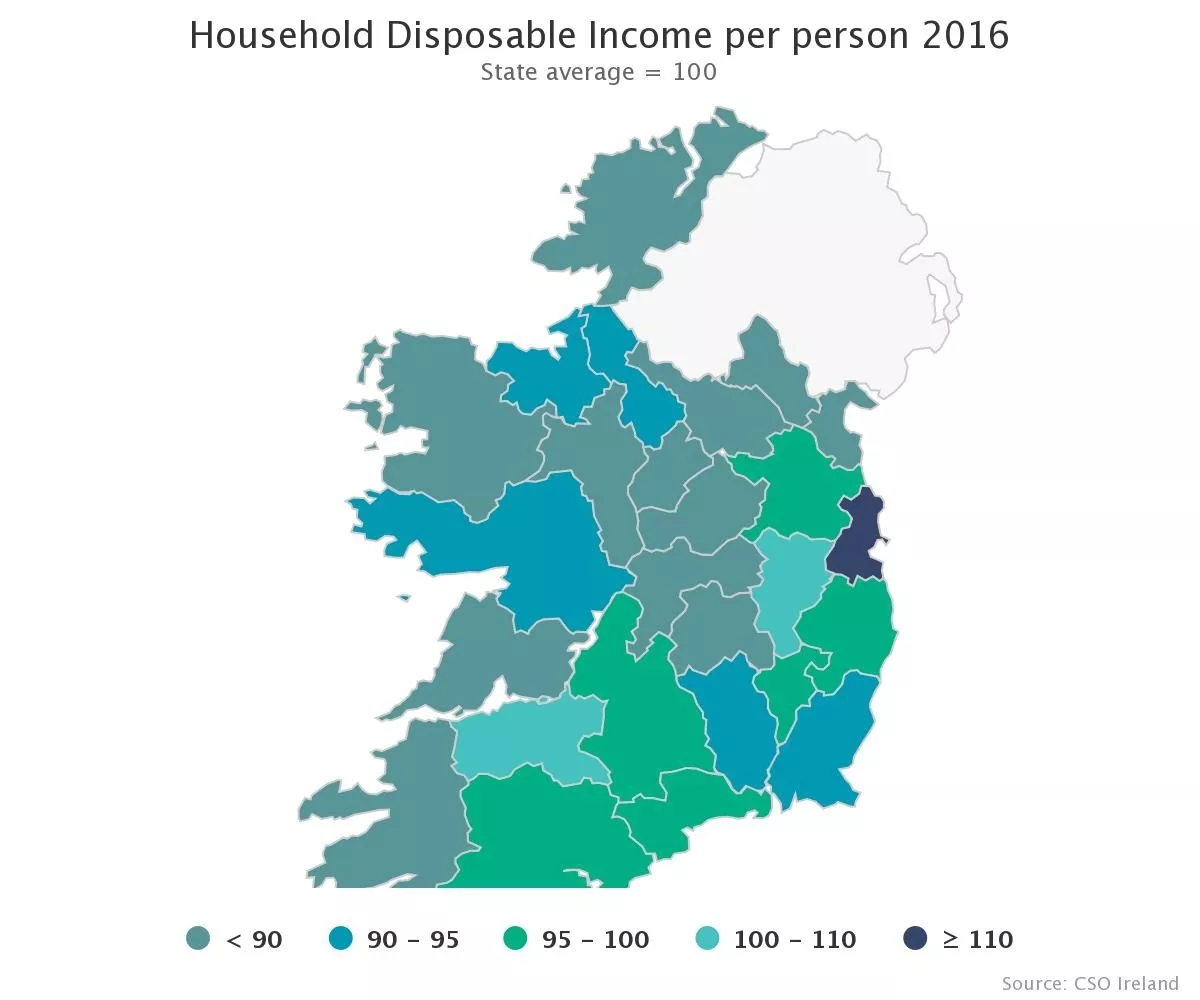People living in Dublin have a disposable income that's over 18% higher than the State average.
Based on 2016 figures released today, the average Dublin-resident had after-tax income of €24,431, 18.4% higher than the nationwide figure of €20,638.
The disposable income gap between Dublin and the State had been 8% in 2010 but is set to grow to 22.1% in 2017, according to preliminary CSO estimates.
Those estimates forecast the disposable income figure growing to €26,122 in Dublin for 2017, compared to the estimated State average of €21,397.
The only other counties to exceed the State average in 2016 were Limerick (€21,979) and Kildare (€20,860).

Wicklow (€20,174), Cork (€20,125) and Waterford (€20,101) also exceed a per person disposable income of €20,000.
The poorest regions are the border counties with €17,370 disposable income per person (15.8% below the State average) and the midlands, at €17,717 (14.1% below the State average). None of the nine counties that make up those regions have ranked above average in the past decade.
Donegal continues to be the county with the lowest disposable income per person, at €15,892, a position it has maintained throughout the 2007-2016 period covered by these figures.
Offaly (€17,039) and Roscommon (€17,145) are the next lowest.
The report also revealed that the State's average disposable income figure has reached its highest level since 2009, with Dublin regional incomes increasing by €982 (4.2%) in 2016 while border incomes, the lowest in Ireland, increased by €538 (3.2%).
Average disposable income by county in 2016
Carlow: €19,943
Cavan: €18,102
Clare: €18,145
Cork: €20,125
Donegal: €15,892
Dublin: €24,431
Galway: €19,046
Kerry: €18,567
Kildare: €20,860
Kilkenny: €18,928
Laois: €17,684
Leitrim: €18,738
Limerick: €21,979
Longford: €17,542
Louth: €18,359
Mayo: €17,650
Meath: €19,670
Monaghan: €17,639
Offaly: €17,039
Roscommon: €17,145
Sligo: €19,277
Tipperary: €19,880
Waterford: €20,101
Westmeath: €18,430
Wexford: €18,921
Wicklow: €20,174






